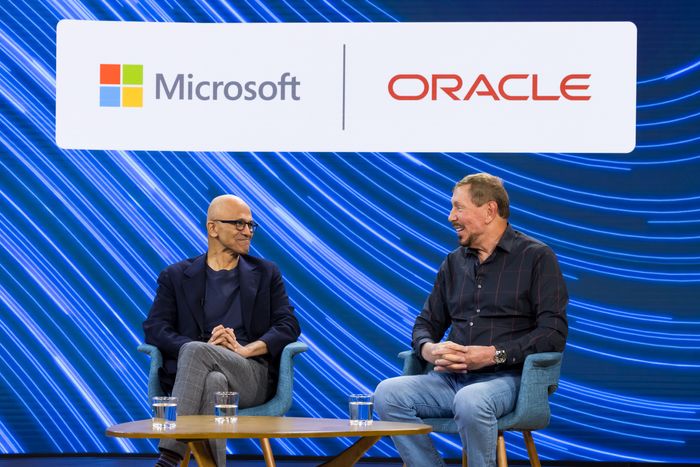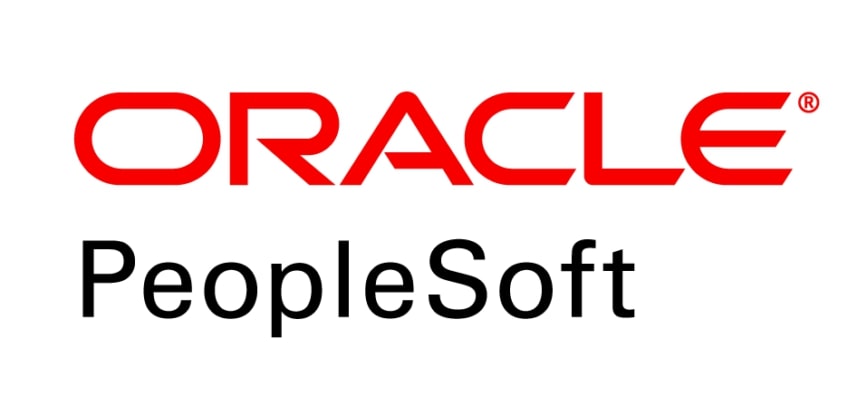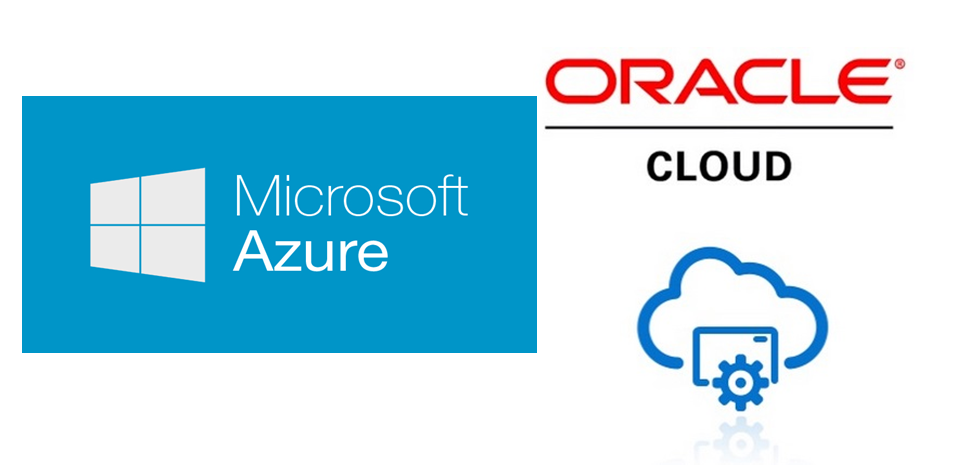The Secrets of Larry Ellison’s Success

I am a law graduate from NLU Lucknow. I have a flair for creative writing and hence in my free time work as a freelance content writer.

I am a law graduate from NLU Lucknow. I have a flair for creative writing and hence in my free time work as a freelance content writer.
The most recent iteration of the cloud alliance between Microsoft and Oracle places a strong emphasis on efficiently integrating data and artificial intelligence. This is due to the fact that an artificial intelligence model’s effectiveness is directly correlated with the quantity, variety, and caliber of the training data.

The firms have been working together in this sector for four years. Oracle, the world’s largest database company, will now physically place its Exadata technology in Microsoft’s data centers, accelerating customer-facing applications.
Customers will therefore have direct accessibility to Oracle database services that are installed in Microsoft Azure data centres and operate on Oracle Cloud Infrastructure.
Instead of running an independent Oracle dashboard, users would be able to manage certain Oracle services from Microsoft’s Azure Cloud dashboard. The goal is to increase application performance while reducing expenses.
From Microsoft’s headquarters in Redmond, Washington, Satya Nadella, the company’s chief executive officer, and Oracle Co-Founder and CTO Larry Ellison spoke with The Wall Street Journal about their collaboration. As stated by Oracle, it was Ellison’s first trip to Redmond.
The Oracle-Azure relationship is positioned to fundamentally alter how companies use AI, with an emphasis on bringing data closer to artificial intelligence (AI) capabilities and opening up previously unimaginable possibilities.
Nadella emphasized the paramount importance of data accessibility in the age of AI. He stated, “In the age of AI, for us, we do need to bring data to where AI is. And that’s what Oracle-Azure really represents.”
Ellison pointed out, “We can now design new drugs in a tiny fraction of the time. We used to be able to do it in a wet lab. We can do it on computers now with AI models, and we’ve seen some very exciting progress already.”
wsj.com
Despite the excitement around artificial intelligence, both leaders recognized that its implementation required caution. Ellison was aware of the worries about technological misuse, a typical worry with every ground-breaking breakthrough. The Oracle-Azure alliance, however, marks a big step towards using AI for the benefit of society and several businesses. This cooperation is positioned to usher in a period of exceptional technical developments that promise to enhance our lives and spur economic growth, with an emphasis on data accessibility, generative artificial intelligence, and ethical deployment.

I am a student pursuing my bachelor’s in information technology. I have a interest in writing so, I am working a freelance content writer because I enjoy writing. I also write poetries. I believe in the quote by anne frank “paper has more patience than person
PeopleSoft is a package of programs used by mid-sized to large businesses as a workforce management solution. PeopleSoft is a piece of software in the Oracle product range. It was originally meant to support finance and human resources, but it has since expanded to incorporate more tools and applications for broad business processes. Many different management components, such as materials, communications, and payroll management, are some of the uses that enterprises and corporations have for implementing software.
About The Company
Dave Duffield and Ken Morris launched PeopleSoft in 1987 to debut the application of their human resources. Their objective was to provide software to fulfill the evolving corporate expectations.
The corporation turned its focus to the internet in 1999. In addition, in 2000, the business developed PeopleSoft8, a web-based version of its software, as well as PeopleSoft e-centre, an in-house application service provider (ASP). Its web-based apps are designed to make system integration simple, allowing a company to link consumers, employees, and suppliers more cost-effectively. An organization can streamline processes since information is easily available by a wide range of personnel at any time and from any location, including mobile devices such as personal digital assistants (PDAs) and mobile phones.
Oracle owns the People Soft e-business software product line. The company began by providing human resources and financial applications. It has grown throughout time to include tools and applications for broad business operations like materials management, as well as solutions for specific industries such as automotive, communications, and higher education.
PeopleSoft currently offers users an integrated ERP software solution to help with the day-to-day execution of various business operations. Human resource departments in large corporations use PeopleSoft systems. Human resource management systems (HRMS), customer relationship management (CRM), finance and supply chain management (FSCM), and enterprise performance management are examples of these applications (EPM).

Oracle Cloud and PeopleSoft
Oracle Cloud provides access to PeopleSoft products. Users can access and deploy HCM, FSCM, and other business apps using Oracle’s Compute Cloud and the Oracle Cloud Marketplace.
Users can transfer data to virtual machines in the Oracle Compute Cloud using Deployment Framework and PeopleTools 8.55. PeopleSoft Development and Testing instances can also be migrated to the Oracle Compute Cloud. Users can also use custom data with PeopleSoft and build multinode PeopleSoft clusters on the Oracle Cloud.
The Merger
PeopleSoft and competitor JD Edwards combined in 2003. Prior to its merger with PeopleSoft, JD Edwards’ product lines, World and OneWorld, were aimed at midsize businesses that were too small to benefit fully from PeopleSoft’s applications. It was able to appropriately offer for these enterprises by merging with JD Edwards, thus expanding its customer base. PeopleSoft rebranded OneWorld as PeopleSoft Enterprise One later on.
Oracle paid $10.3 billion and acquired PeopleSoft in 2005, adding CRM software to its product range. Oracle cut off 5,000 employees shortly after acquiring the firm. People Soft Enterprise One became JD Edwards EnterpriseOne, and PeopleSoft World became JD Edwards World, as Oracle rebranded the previous JD Edwards product line.
David Duffield – Founder
David is a successful executive and visionary in the company management, government, and higher education software industries. David launched PeopleSoft in 1987 and served as its CEO and board chairman prior to joining Workday. Before being bought in 2005, The company had grown to become the world’s second-largest ERP application software firm. David also founded Integral Systems, Business Software, and Information Associates. The company went public in 1992 and was purchased by Larry Ellison’s Oracle for $10.3 billion in 2005. He started Workday in 2005, which offered cloud-based management software and other solutions. In 2012, the company went public and raised $637 million. Duffield stepped aside as CEO of Workday in 2014, but he remains chairman. He currently controls approximately 25% of Workday.

I am a second-year student pursuing Liberal Arts from Nmims. I am a painter, I love reading and have a great interest in cooking. I am also a trained kickboxer. I’ve always had a passion for writing and hence in my free time, I work as a freelance writer.
With the emerging IT industry in India and abroad as well, many new companies are coming up rapidly. Some of the dreams of making their company bigger and some of them after earning dollars sell the company. But, the immense potential of internet, data, and telecommunication has increased the scope for employment as well. Especially went it comes to services like data storage, data security, cloud computing, etc.
Oracle has always been a very famous company in the IT sector. But, after the acquisition of NetSuite in 2016, it has become a more prominent service provider in the world. NetSuite is a cloud computing company founded in 1998. Evan Goldberg founded the company to improve the services provided by a business. Zachary Nelson joined the company in 2002 and under his leadership, the company filed its first successful IPO. It built software that helped the business to manage their finance, improve relationships with customers, etc.
Currently, NetSuite operates under the parent company, Oracle. It is exclusively a company based on cloud-based management.
Evan Goldberg went to Harvard University to acquire his bachelor’s degree in Applied Mathematics. Evan’s career started with joining Oracle in 1987. His position in the company was a Software Engineer at the beginning and eventually, he became the Vice President of the company. He left the company in 1995 and founded mBed Software in the same year. Evan founded NetSuite in 1998 and currently, he is the EVP of the company (Oracle NetSuite).
Born into a family in Nebraska, Zachary belonged to a very huge family. Zachary pursued his higher studies in biology and acquired both his bachelor’s and master’s in the same from Stanford University. His field of higher studies and careers were diametrically opposite of each other. After completing his studies, he went for marketing, finance, sales, etc.
He worked at companies like Sun Microsystems, McAfee, Oracle Corporation, Cunningham Communication, etc. Zachary worked at Oracle for many years and he became the VP, World Wide Marketing at Oracle. Also, he broke the record of becoming the youngest VP in the history of Oracle. He joined NetSuite in 2002. Apart from running big companies, he is also a big investor.
When Evan initially founded the company, he named it NetLedger. Evan, from his past experiencing, was evidently from a finance background and hence NetLedger focused on accounting as well. In brief words, NetLedger provided web-hosted accounting software. But, there are a lot of operations under the finance section of a company. So, to make sure NetLedger can provide a company’s all these essential functionalities, Evan decided to expand.
He kept on adding features, and the company eventually became more versatile. And, all these products were added in the list before the term “cloud computing” even came into play. But, it seems like an idea always existed, new terms just came in. Evan established the company with financial support from Oracle.
Then CEO of Oracle, Larry Ellison, helped Evan in many ways to set the company. Evan was provided with both the seed funding as well as employees from Oracle to start NetLedger. He received a seed funding of $125 million from Oracle. Initially, Oracle licensed the company. But, it didn’t seem like a good idea and they called it off.
NetSuite gained unexpected popularity because it is considered as the first-ever company to come up with cloud computing. The company started providing related services even the term was introduced. So, the clients of NetSuite were in a very advantageous position of using such software.
In July 2002, Zachary Nelson became the CEO of the company. And, he drove NetSuite’s annual revenue to $1 billion from $1 million.
Under Zachary Nelson, the company’s first successful IPO was led by him in 2007. NetSuite then was no more a start-up but a big powerful company. By 2017, the company’s annual revenue summed up to $1 billion. Under his leadership, the company made many big acquisitions which include OpenAir in 2008, TribeHR in 2013, and Bronto Software in 2015.
In July 2016, Oracle announced that it will be acquiring NetSuite for $9.3 billion. The deal was closed in November. The headquarters of the company is in California and currently, it has around 600 employees.

Annasha Dey is an NIT student, who apart from studying engineering is also a content writer. She has a great interest in photography, writing, reading novels, and travelling as well. She is a foodie who loves socializing and hanging out with her friends. She is also a trained Kathak dancer and a big fashion enthusiast. Dey also loves watching TV series, which includes F.R.I.E.N.D.S. and Big Bang Theory. To be a better writer she prefers to read more
Amazon has got its hands in almost everything. From grocery to space, it wants to take over every field. But it has also been using the services from other companies as a consumer. For the past few years, the company has been keeping its data in the Oracle database. But as it has already developed its cloud web services, AWS, the company had started to migrate its database from Oracle to AWS. Today the company announced that it has migrated the last set of data from the Oracle database to AWS, finally terminating Oracle’s services.
The company shared the news through a blog post. Jeff Barr from AWS wrote on the behalf of Amazon, “I am happy to report that this database migration effort is now complete. Amazon’s Consumer business just turned off its final Oracle database (some third-party applications are tightly bound to Oracle and were not migrated).”
He further wrote, “Over the years we realized that we were spending too much time managing and scaling thousands of legacy Oracle databases. Instead of focusing on high-value differentiated work, our database administrators (DBAs) spent a lot of time simply keeping the lights on while transaction rates climbed and the overall amount of stored data mounted.”

According to the blog post, the last set of data involved 75 petabytes of data that was stored in 7500 Oracle databases. Since Amazon is a huge company, it took years for it to transfer the enormous data from different databases to its home-grown database. The company had constituted around 100 teams to carry out the task.
As the migration has come to an end, over 100 consumer businesses, including Amazon Prime, Alexa, and Kindle, have been moved to AWS. This has not made Amazon walk a step forward to become an independent company, but also it will now be saving up to 60% on its data maintenance. This will now also reduce the latency rate for consumer applications by 40%. This way, the company will be able to provide better services to its consumers such that the experts will not be spending too much time on maintaining the data.

Yashica is a Software Engineer turned Content Writer, who loves to write on social causes and expertise in writing technical stuff. She loves to watch movies and explore new places. She believes that you need to live once before you die. So experimenting with her life and career choices, she is trying to live her life to the fullest.
Microsoft is up to something big, and that has become quite obvious, as it has been getting into collaboration with its enterprise peers for quite some time now. Recently it joined hands with Sony, and before that, it had partnered with companies like Adobe and SAP for different projects. And now, Microsoft will be getting together with the biggest database company Oracle to share their cloud services with each other.

The two companies announced today that they have reached an agreement, where they will connect their clouds such that the users will be able to use both the services to migrate and run mission-critical enterprise workloads across Microsoft Azure and Oracle Cloud. This way, both the companies will be able to share data, and the load with each other, seamlessly.
The alliance between the two companies is not a mere that matter of connecting both the clouds, but will provide a variety of useful facilities to both companies as well as its users. With the partnership, Microsoft can better focus on carrying out the workloads, and Oracle will be able to emerge as a dominant player in the cloud computing industry, as it has not been able to make a mark like its rivals Amazon, Google and Microsoft, have.
With this partnership between Microsoft and Oracle, the Oracle users will be able to run its applications, including JD Edwards EnterpriseOne, E-Business Suite, PeopleSoft, Oracle Retail and Hyperion on Azure. The users will also be able to run the different Oracle database such as RAC and Exadata on the Azure cloud.
“With this alliance, our joint customers can migrate their entire set of existing applications to the cloud without having to re-architect anything, preserving the large investments they have already made,” the executive vice president of Oracle’s cloud infrastructure unit, Don Johnson, said in a statement.
The service has been made available in Azure US East and Oracle’s Ashburn data centre, starting from today. And, the companies plan to expand it to other regions as well.

Yashica is a Software Engineer turned Content Writer, who loves to write on social causes and expertise in writing technical stuff. She loves to watch movies and explore new places. She believes that you need to live once before you die. So experimenting with her life and career choices, she is trying to live her life to the fullest.